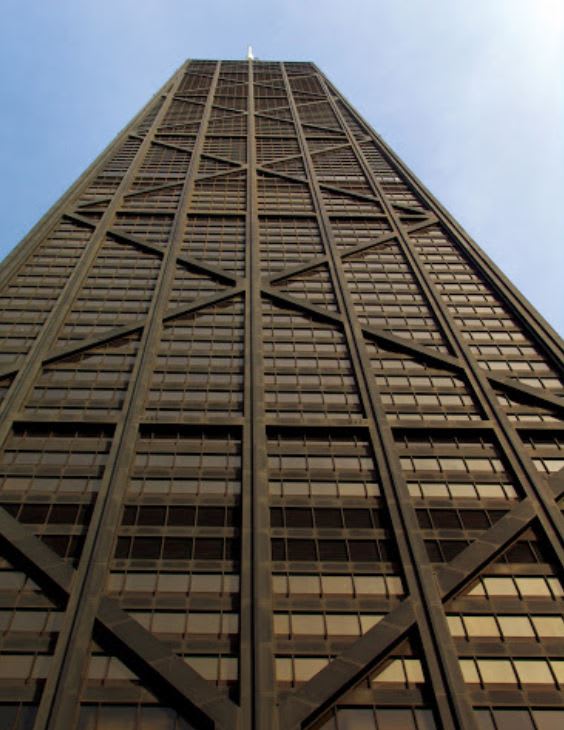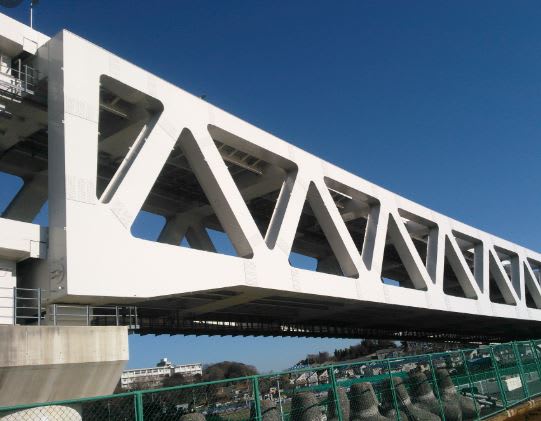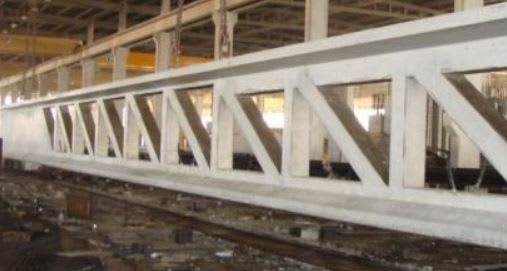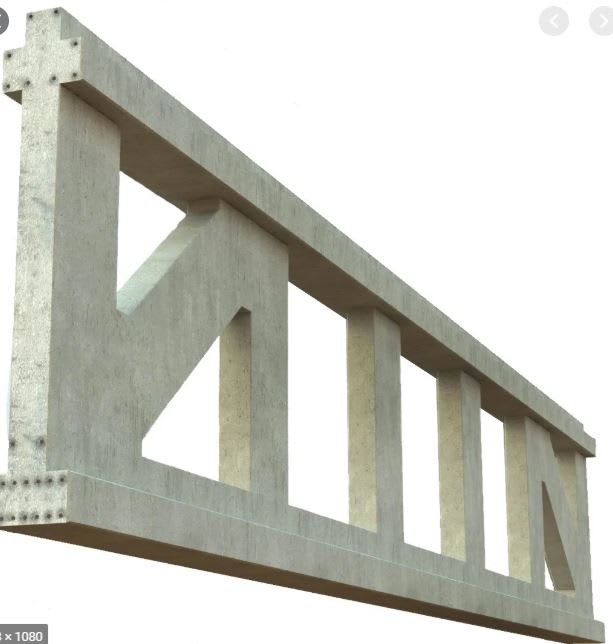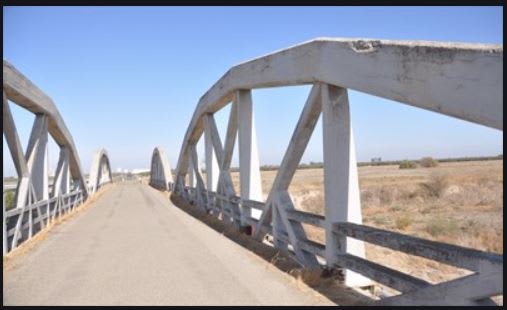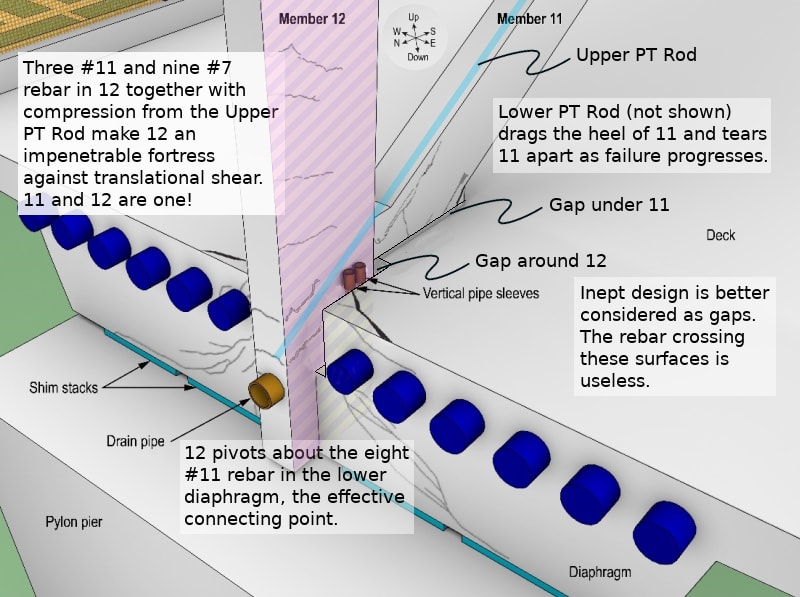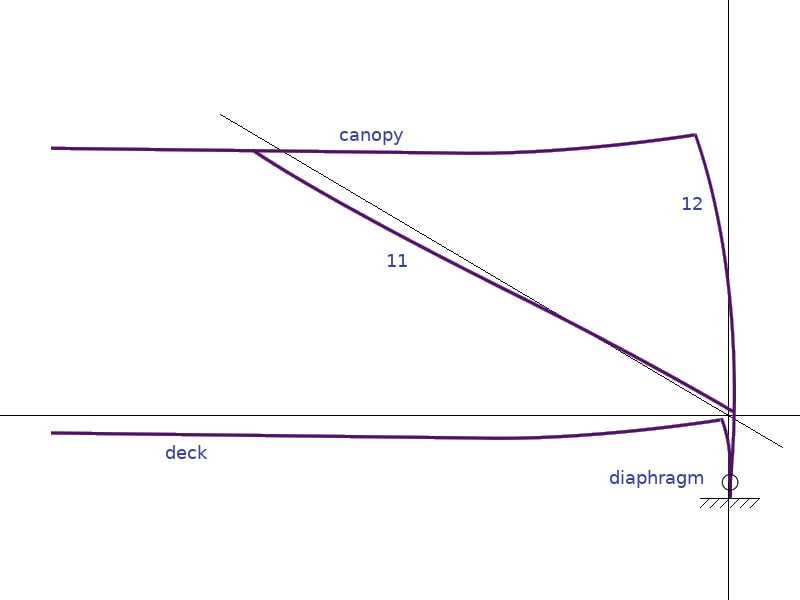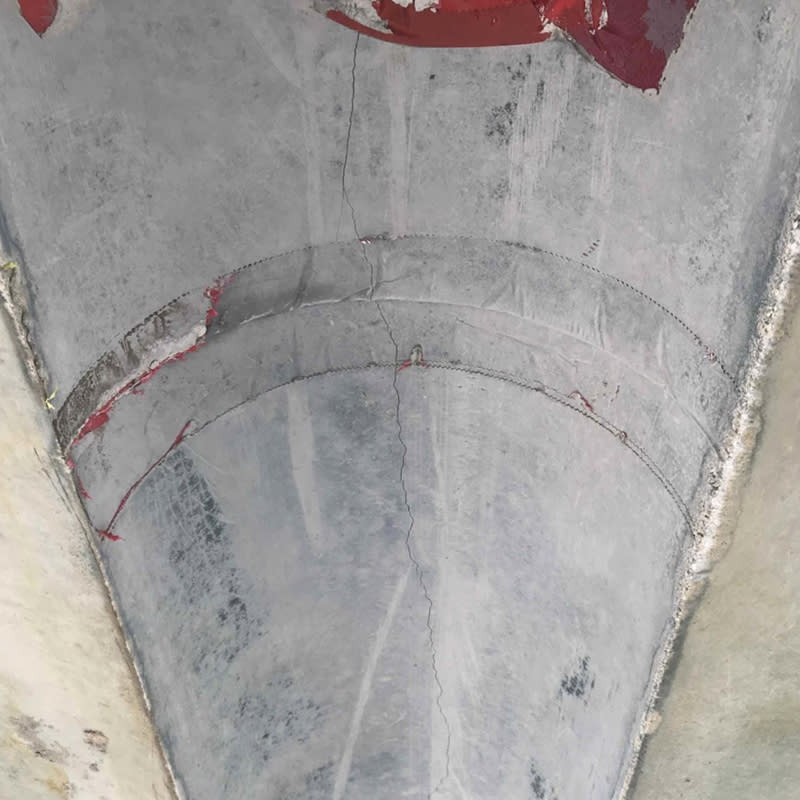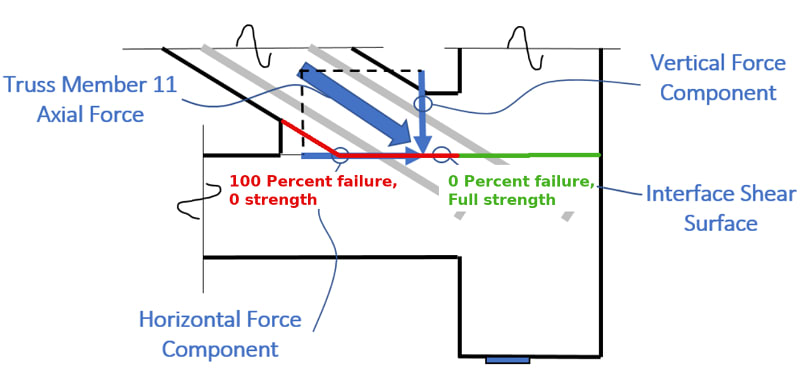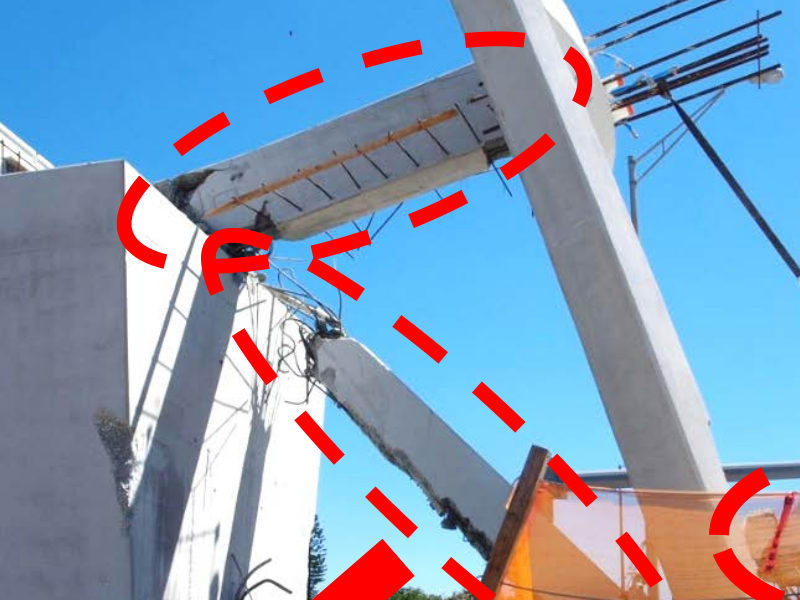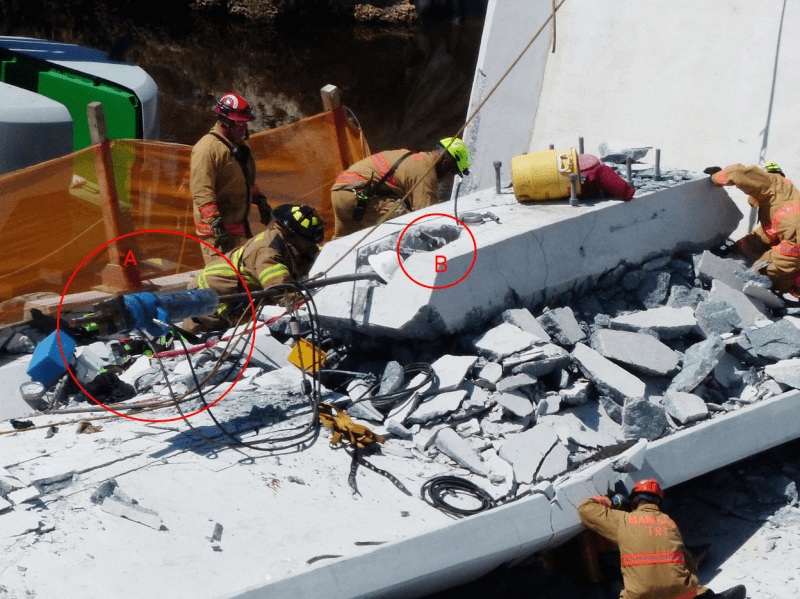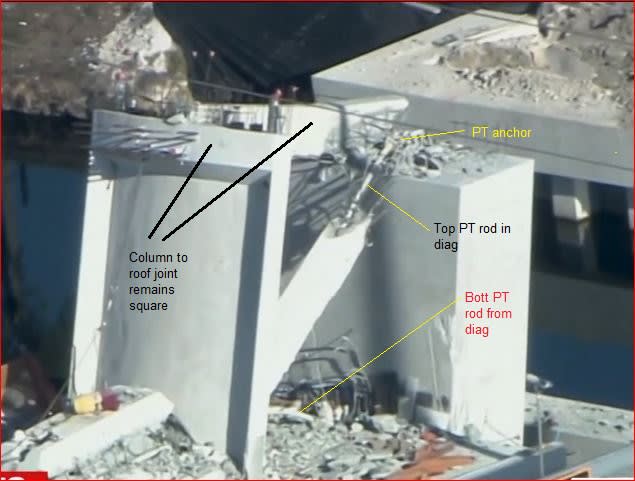saikee, Thank-you again for your comments. I believe you have given an excellent summary of the issues encumbering the 11/12/"deck" node though you have understated the issue of the blue electrical conduit on either side of 12. These conduit are equivalent to an additional pipe sleeve on each side of 12. As such, I have considered these surfaces as contributing "zero" to the strength of the structure. As most agree, this node is the fundamental flaw in the structure.
In my stick diagram above, I attempted to show relative movements in the nodal region and also proposed an offset displacement of 11. My reasoning for this is that as 12 bows, the base of 11 tips upward, and as the bridge sags, the top of 11 tips downward. My depiction of the movement of the top of 12 and both the canopy and deck deflection is greatly exaggerated. A one inch relative motion between the deck and 11 would not result in the same movement elsewhere in the structure, rather, significantly less.
It seems to me that 11 is ill equipped to support the loads imposed on it both in its intended role and far less in its effective role. There is no question that the base of 11 is being torn apart. I suggest the following image, the significance of which has been overlooked, reveals that the failure of 11 was the "next step" in the collapse. The upper PT Rod has yielded at the failure point in 11 which indicates that its base was still firmly positioned in 12 as 11 sheared. The failure cascaded from that point as 11 pancaked while being guided along the lower PT Rod. Note that the lower PT Rod was free to extend out of the blister cap while the upper PT Rod was not.
Evidence Testing and Results - Adrienne Lamm
(epoxybot (Structural) 18 Mar 18 17:25)
As I reviewed the dash cam video, I noted that prior to 12 descending, the 10/11/canopy node dropped significantly while the deck had also rotated significantly. This suggests that the slab rotated off of the base of 12 and I've previously noted evidence of torsional failure in the diaphragm. The collapse of 11 would have hammered its own base, the 11/12 node and also the lower portion of 12, increasing the likelihood of the rebar being stripped clean.
The Shear Plane Fallacy as I posted only refutes the suggestion that surface treatment or lack thereof played any role in the collapse. Although weaker shear surfaces are identified, I do not find it plausible that the bulk of concrete and rebar in Member 12 was weaker than the distressed Member 11.
You rightfully raised the issue of language. It has me thinking that when the cracks first appeared as the shoring was removed the question that needed to be asked was "Is the structure fit for moving?" and this should have guided the inspection and review at that time. Figg was well aware that the node was critical and that the structure needed to survive a certain amount of jostling. As such, I think that the cracks were structural issues prior to the move.
(edit: removed blank space)

